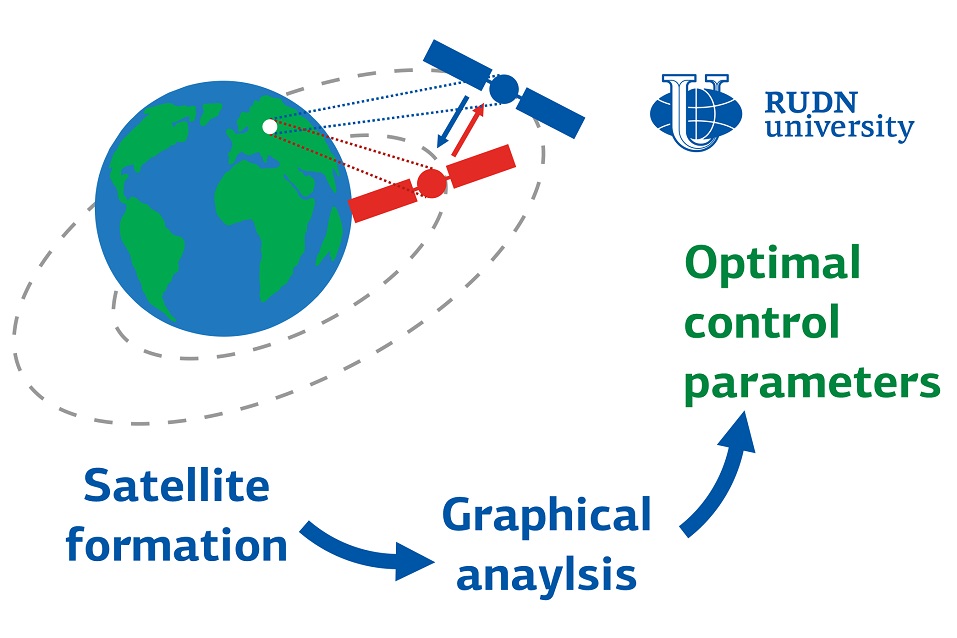RUDN Engineers Show the Way to Control Satellite Formations More Effectively
Some space missions use not one satellite, but several at once. It is necessary for example when it they need to observe one object on the surface of the Earth at different angles at the same time. In this case, satellites do not act independently, as for instance in navigation or telecommunication systems, but together — they constantly exchange information and adjust their relative movement. Such groups of satellites are called formations. They provide joint data on various objects on the Earth’s surface and in near-Earth space, but for this it is necessary to solve a complex optimization problem — to choose the optimal parameters for controlling the relative motion of satellites. A RUDN University engineers together with colleagues from Malaysia proposed how to simplify the calculation of the optimal control of the formation of satellites. It helps finding the optimal characteristic velocity that determines the required fuel consumption and increasing the efficiency of satellite formation control with minimal calculations.
“Our main goal is to simplify the on-board calculation of the optimal characteristic velocity, delta-v, and the corresponding orbital maneuver for controlling the formation of satellites. We have shown that the delta-v value can be found graphically instead of the traditional solution of complex dynamic equations,” said Yury Razoumny, Doctor of Technical Sciences, Director of the Department of Mechanics and Control Processes of RUDN University.
Scientists simulated a coordinated orbital maneuver of a formation of two satellites when observing a given ground object. At the same time, it is necessary to spend as little fuel as possible and provide the necessary monitoring conditions. The calculation of the optimal delta-v value is reduced to the analysis of possible options on the graphs of changes in the main parameters of the orbital motion of satellites in the formation. The best option is selected using a simple analysis of these graphs.
“This method is particularly well suited for observing objects on the earth’s surface. It allows, with low computational costs, to determine the lowest characteristic speed for the orbital maneuver of the formation satellites with the joint observation of the required object on the Earth’s surface,” said Yury Razoumny, Doctor of Technical Sciences, Director of the Department of Mechanics and Control Processes of RUDN University.
Results are published in Acta Astronautica.
Sergey Ivanov, a scholar from St. Petersburg, has been named the first winner of RUDN University’s International Prize for Scientific Achievements in Mathematics, worth 5 million rubles.
Products derived from microalgae represent a cutting-edge development in the field of bioeconomy. The potential of this biological resource was discussed at the international research seminar “Foundations for a Green Sustainable Energy”, part of the BRICS Network University’s thematic group on “Energy”. The event was organized by the Institute of Ecology at RUDN University.
Ambassadors of Russian education and science met at a conference in RUDN University to discuss how they can increase the visibility of Russian universities and research organizations in the world, and attract more international students in Russia.
